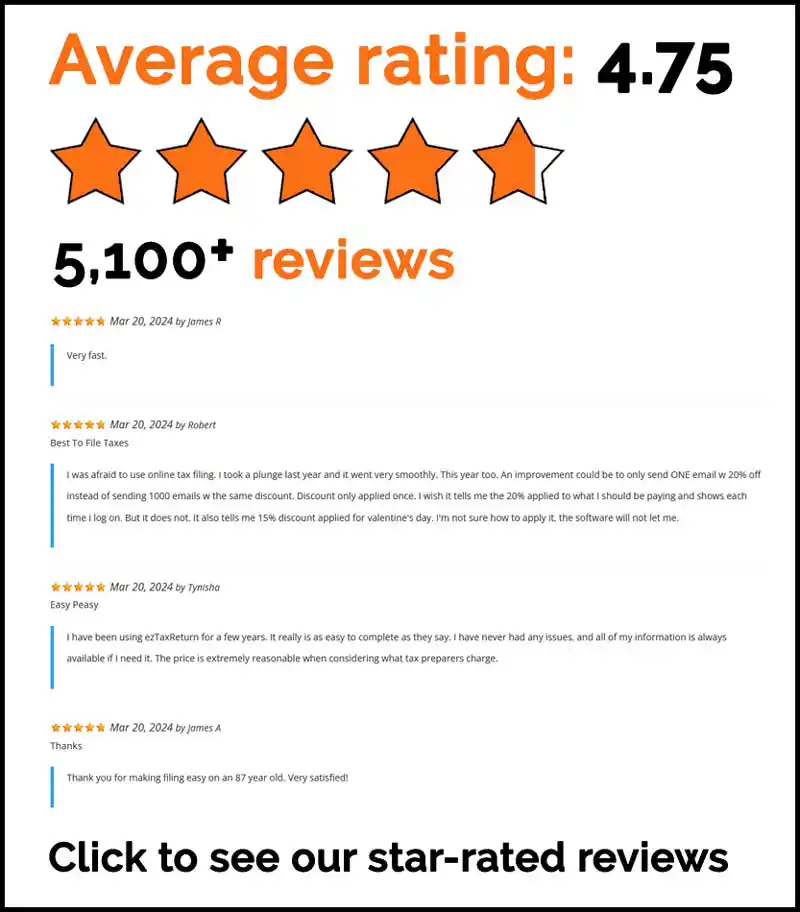The information in this article is up to date for tax year 2024 (returns filed in 2025).
Wondering what is the difference between 1099 and W-2? It’s all about taxes and benefits. W-2 employees have taxes withheld from their pay and get benefits from their employers, while 1099 workers handle their own taxes and typically miss out on benefits. Whether you’re a full-time employee or a freelancer, understanding the difference between 1099 and W-2 is key to managing your taxes and paycheck. This guide will explain it clearly so you can make sense of how each impacts your financial life.
Key Takeaways
- W-2 employees have taxes withheld and enjoy benefits like health insurance, while 1099 workers are independent contractors responsible for their own taxes and lack benefits.
- Employers face different costs and control levels: W-2 workers provide stability but at higher costs, whereas 1099 workers allow for flexibility but less control.
- Proper worker classification is crucial for compliance with tax laws; misclassifying workers can lead to significant penalties and legal issues.
Who Are W-2 Employees?
W-2 employees are formally employed by a company and have taxes withheld from their paychecks. Their employment status often makes them eligible for benefits like health insurance and retirement plans. Commonly found in roles like office workers, healthcare workers, and government employees, W-2 workers are usually hired for indefinite durations to support ongoing work within the organization.
Employers must withhold employment taxes, including Social Security and Medicare, from their paychecks. This structured employer-employee relationship ensures stability and compliance with tax and labor laws.
What is Form W-2?
Form W-2 is a tax form used to report an employee’s annual earnings and the taxes withheld from their salary. This form is essential for income tax filing, detailing the wages paid and the taxes withheld for federal, state, and local purposes.
W-2 forms must be provided to employees by January 31 of the following year for timely and accurate tax reporting. Employees earning at least $600 from an employer are required to receive a Form W-2, and even if they work for part of the year, they must still file this form with the IRS. Got your W-2? File with ezTaxReturn and get your biggest possible refund, guaranteed.
Employee Benefits for W-2 Workers
W-2 employees typically receive various benefits, including health insurance, retirement plans, and paid time off. Such benefits foster a stable and secure employment environment, particularly for full-time employees. Government employees, in particular, enjoy strong job security along with comprehensive benefits, making these positions highly coveted.
Even part-time W-2 employees might receive some benefits, though these are generally less extensive than those provided to full-time employees.
Who Are 1099 Workers?
1099 workers, also known as independent contractors, are responsible for managing their own taxes and do not receive traditional employee benefits. These workers must cover their own business expenses and file income taxes independently.
Although they lack benefits, 1099 workers have the freedom to choose clients and negotiate rates, often resulting in higher income potential. This independence allows for greater flexibility in their work arrangements compared to W-2 employees.
What is Form 1099-NEC?
Form 1099-NEC is used to report nonemployee compensation of $600 or more, ensuring that the IRS is informed about payments made to independent contractors. Freelancers and independent contractors receive this form for income reporting, and they are responsible for reporting and paying their own taxes, including self-employment taxes that cover Social Security and Medicare contributions.
Copies of Form 1099-NEC must be sent to the IRS and relevant state authorities to maintain tax compliance. Got your 1099? File with ezTaxReturn and make tax season easy!
Types of 1099 Workers
1099 workers come in various forms, including freelancers, consultants, and gig workers. Freelancers typically work on a per-project basis, allowing them to manage their workload and choose their rates, often getting paid hourly or per project.
Consultants are self-employed professionals with advanced skills and knowledge, usually compensated at a higher rate than freelancers. Gig workers perform small jobs and are paid for each task completed, reflecting a flexible work arrangement.
What Is the Difference Between a 1099 and a W-2?
The main differences between W-2 employees and 1099 workers involve tax withholdings, benefits, and control. W-2 employees have taxes withheld and receive benefits, whereas 1099 workers manage their own taxes and lack benefits. While employers face higher costs for W-2 employees due to payroll taxes and benefits, they gain greater control over work processes.
Understanding these distinctions is crucial for accurate tax reporting and compliance.
Tax Withholding and Reporting
Employers withhold federal and state income taxes, as well as Social Security and Medicare taxes, from W-2 employees to withhold income taxes. In contrast, 1099 workers are responsible for setting aside money for their income taxes to avoid a large tax bill. Typically, they make quarterly estimated tax payments.
Independent contractors can deduct expenses like unreimbursed business costs and home office expenses on their tax returns. For tax reporting, 1099 workers must collect Form W-9 from clients and file Form 1099 for any compensation received.
Employment Status and Control
Employers exert significant control over how, when, and where W-2 employees work. This control often includes periodic training and performance evaluations, indicating a structured employer-employee relationship.
In contrast, independent contractors work with more autonomy and receive less detailed instructions on task completion. If an evaluation system measures only results rather than the means of achieving them, it suggests an independent contractor.
Benefits and Protections
W-2 employees enjoy key protections such as minimum wage, overtime pay, and unemployment insurance. They typically receive a variety of benefits, including healthcare, retirement contributions, and paid time off. Misclassified workers lose these essential benefits and protections, which can cause legal issues for employers.
Misclassifying workers can lead to financial consequences for employers, including penalties and liability for unpaid employment taxes.
Pros and Cons of Hiring W-2 Employees
W-2 employees often show better loyalty, which translates to improved work ethic and morale. However, employers face higher costs and additional resource requirements compared to hiring 1099 independent contractors.
Advantages for Employers
Employing W-2 workers offers stability and allows businesses to maintain control over the work performed. These employees often benefit from employer-provided resources and training, fostering a stronger company culture.
Using W-2 employees helps businesses manage their workforce efficiently, paying only for the required staff.
Disadvantages for Employers
The overall expense of employing W-2 workers exceeds mere wages due to additional benefits and taxes. Additional costs related to payroll taxes, including Social Security, Medicare, and unemployment taxes, are incurred by employers.
W-2 employees may also require additional costs for overtime, equipment, and workspace compared to hiring contractors.
Pros and Cons of Hiring 1099 Workers
Businesses gain greater flexibility in workforce management by hiring 1099 workers, allowing adjustments based on project needs. However, it also carries the risk of misclassification and potential legal repercussions.
Advantages for Employers
Hiring 1099 contractors offers numerous advantages for businesses, including flexibility, reduced costs, and no need to provide benefits. Employers can save approximately 30% in labor costs by hiring 1099 contractors instead of W-2 employees.
Businesses hiring 1099 contractors do not have to provide traditional employee benefits, leading to significant financial savings.
Disadvantages for Employers
Compared to W-2 employees, employers have less control over the work processes of independent contractors. Misclassification of workers can lead to significant legal and financial penalties for employers.
The nature of 1099 work often leads to a lack of long-term commitment from contractors.
Legal Considerations and Risks of Misclassification
Proper worker classification helps avoid legal and financial penalties, ensuring compliance with federal tax regulations. Classifying a worker as a 1099 contractor instead of a W-2 employee can cause serious legal issues.
Employers exert less control over how independent contractors perform tasks, affecting project consistency and oversight.
IRS Common Law Rules
The IRS uses common law rules to classify workers, which is crucial for tax purposes. These rules evaluate worker classification based on the degree of behavioral and financial control exercised by the internal revenue service.
Meeting company standards in work delivery is expected of W-2 employees, indicating a structured employer-employee relationship.
Penalties for Misclassification
Misclassified employees can lead to civil penalties for employers, including fines, back taxes, and potential criminal penalties of up to $1,000 per worker. The IRS may also impose fines for failing to withhold payroll taxes. State labor departments have the authority to impose penalties for non-compliance. This applies to both unemployment insurance and workers’ compensation regulations.
Businesses can use the Voluntary Classification Settlement Program to correct misclassification.
How to Determine Worker Classification
Classifying a worker correctly as either a W-2 employee or a 1099 contractor is crucial for compliance with tax and labor laws. If uncertain, it’s best to either classify the worker as an employee or request a determination from the IRS.
Behavioral Control
Behavioral control assesses how much control an employer has over worker tasks and schedules. The ability to direct a worker’s activities strongly indicates an employer-employee relationship.
Autonomy in deciding how to complete tasks typically suggests independent contractor status.
Financial Control
Financial control involves the employer’s influence over the economic aspects of the worker’s job. W-2 employees receive a regular paycheck, which is subject to wage laws, while 1099 workers typically receive one-off or irregular payments.
Workers are considered independent contractors if they invest significantly in tools and equipment and incur unreimbursed expenses.
Type of Relationship
W-2 employee relationships usually involve more ongoing commitment from both parties. This commitment is characterized by employer-provided benefits and a structured work environment.
Payroll Taxes and Filing Requirements
Employers must cover costs related to Social Security and Medicare taxes for W-2 employees. This responsibility includes managing payroll taxes and benefits, which adds complexity and financial burden when hiring W-2 employees. Withholding income taxes and paying Social Security and Medicare taxes for W-2 employees adds to employers’ financial liabilities.
Failure to file the required 1099 and W-2 forms can lead to significant financial repercussions for the employer.
Payroll Taxes for W-2 Employees
Income tax withholding, the employee portion of Social Security, and Medicare taxes must be withheld from W-2 employees’ paychecks. The Social Security tax rate is 6.2% for both the employer and the employee, while the Medicare tax rate is 1.45% for both parties.
Additionally, employers must withhold an additional Medicare tax of 0.9% for employees earning over $200,000 annually.
Self-Employment Taxes for 1099 Workers
As self-employed individuals, independent contractors must pay self-employment taxes on their earnings. 1099 contractors are encouraged to estimated tax payments throughout the year to avoid a large tax bill.
When filing Form 1099-NEC, a copy must be sent to all contractors to ensure tax compliance.
Summary
Understanding the differences between W-2 and 1099 workers is essential for both employers and employees. W-2 employees provide stability and benefits but come with higher costs and more control for the employer. In contrast, 1099 workers offer flexibility and cost savings but lack benefits and legal protections. Accurately classifying workers ensures compliance with tax and labor laws, avoiding potential legal and financial penalties.
Ready to tackle your taxes? With ezTaxReturn, filing is fast, easy, and stress-free. Get started today and let us help you navigate your 1099 or W-2 filings with confidence!
Frequently Asked Questions
What is the primary difference between W-2 employees and 1099 workers?
W-2 employees have taxes taken out by their employer and often get benefits, while 1099 workers are responsible for their own taxes and usually miss out on those perks. It’s all about who handles the taxes and what benefits you get!
What are the tax reporting requirements for 1099 workers?
If you’re a 1099 worker, you gotta report your income on Form 1099-NEC and handle your own taxes, including self-employment taxes for Social Security and Medicare. So keep track of your earnings!
What benefits do W-2 employees typically receive?
W-2 employees usually enjoy perks like health insurance, retirement plans, paid time off, and unemployment insurance, making their job feel a bit more secure and rewarding. It’s a nice package that adds to the overall work experience!
What are the risks of misclassifying workers?
Misclassifying workers can seriously bite you with hefty fines, back taxes, and even legal trouble. Plus, it can really tarnish your reputation, so it’s best to get it right!
How can employers determine the correct classification for workers?
Employers should check how much control they have over the worker and the nature of their relationship. If there’s any doubt, it’s safer to classify them as an employee or ask the IRS for clarification.
The articles and content published on this blog are provided for informational purposes only. The information presented is not intended to be, and should not be taken as, legal, financial, or professional advice. Readers are advised to seek appropriate professional guidance and conduct their own due diligence before making any decisions based on the information provided.




